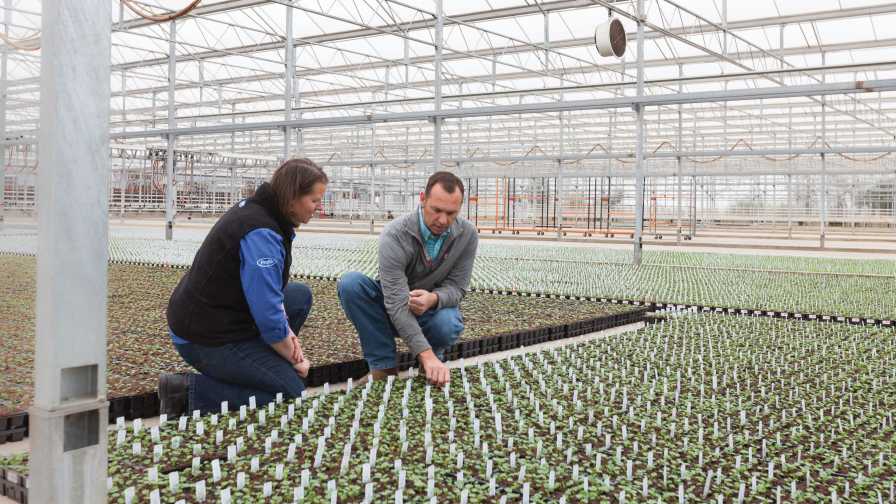Growers, Heed This Supply Chain Advice From Your Vendors

At a time like this, growers should be working closer than ever with their product suppliers. Photo: Profile Products
Horticulture supply chain issues are affecting not just controlled-environment growers, but suppliers and vendors as well. In fact, in Greenhouse Grower’s 2021 State of the Industry, nearly 60% of the approximately 100 suppliers of plants, hard goods, growing media, crop protectants, and equipment who took the survey ranked supply chain disruptions as one of the top challenges they are facing along with their customers.
On a broad scale, several suppliers ranked supply chain concerns as one of the most significant trends affecting planning for 2022. The demand from growers for products is stronger than ever.
“Everyone wants to recover [from COVID-19 shutdowns] fast, so they are investing in future growth,” said one respondent, while another said this demand is likely to remain strong for at least the next two years.
We also asked vendors “Were there any supply chain concerns your struggled with this year, or any you are anticipating next year?” The short answer was yes and yes, with a sampling of the responses below:
- “Yes, container availability is still a big issue besides the hike in freight prices.”
- “There was quite a bit of trouble having enough seed for demand, and there was quite a bit of backlog in labs from our partners in Europe. We do see this as an issue for this coming year.”
- “Yes, ocean freight delays and difficulty getting trucks.”
- “Shipping cost is too expensive but there are not many local distributors.”
- “Huge container freight increases, which will create huge price increases.”
- “Our main problems continues to be the delivery of vegetative starter plant material to customers quickly, accurately, and with acceptable cost.”
- “Plastic and growing media have longer lead times than seen in the past.”
- “Significant increase in vegetable logistics costs.”
- “In most cases, we met demand for plants and seeds. Next year is hard to predict, so we are discussing with lots of customer, growers, and retailers to assess.”
- “We are experiencing severe supply chain issues with greatly extended lead times and product scarcity. We anticipate this will continue into 2022.”
- “Transportation availability and cost; availability of growing containers, growing mixes, and their cost.”
- “Last year, manufactures didn’t have the supplies to pack. This year, they are fighting for materials to produce.”
In most cases, product suppliers are working closely with their grower customers to help them plan for what will likely be another strong year. Here is some of the advice suppliers are offering their customers, based on survey responses:
- “Plan early and buy as early as you can.”
- “Provide forecasting information as early as possible, which we understand can be hard to do with unexpected demand.”
- “Look into local suppliers or just stop purchasing goods from China or abroad.”
- “Pln ahead, and when you think you are ready, prepare Plan B and Plan C, because you are not ready.”
- “Don’t promise if you can’t produce; be honest with your customers.”
- “Buy wherever you can to plant your crop on time. However, be loyal to the suppliers that have been loyal to you over the years.”
- “Hire a true supply chain professional and provide them with the proper resources to do their job.”
- “Work with suppliers to understand each other’s expectations.”
- “Try to handle as much as you can in house.”
- “Don’t depend on ‘just-in-time’ strategies. Take in supplies as soon as they become available.”
- “Maintain good relationships with all suppliers.”
- “Throughout my career, using used pots was a no-no. But with the state of the supply chain today, I say reuse all the containers you can. Get your customers to bring back the pots. Make a big deal of it, so you can make people think you care about the planet (which you should anyway) and keep the plastic pots out of the landfills, all the while you are getting some help with the extra expenses caused by high resin prices.”
In the coming weeks, stay tuned to GreenhouseGrower.com for more updates on how growers of all crops, sizes, and locations are dealing with the supply chain problem, and how the industry as a whole is responding.










